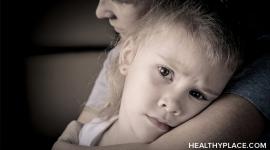Effects of Reactive Attachment Disorder in Teens, Children

Reactive attachment disorder (RAD) is a trauma disorder that occurs in infancy or very young childhood; however, the effects of reactive attachment disorder are long-lasting and can be seen in children and teens (Reactive Attachment Disorder in Adults). Reactive attachment disorder is caused by neglect so severe that an infant doesn’t form an attachment to a caregiver. As a result, the baby doesn’t experience a sense of safety, security, and protection, nor does he/she develop a sense of trust.
As this child grows, RAD symptoms manifest into significant emotional, behavioral, social, and academic problems because of the lack of early attachment. Children and teens with RAD can’t form appropriate social relationships. Withdrawal and avoidance are the primary ways that kids with RAD handle the world around them. The effects of reactive attachment disorder in teens and children can be felt in all areas of their lives.
Effects of Reactive Attachment Disorder Impact Children, Teens
In its Diagnostic and Statistical Manual for Mental Disorders, Fifth edition (DSM-5), the American Psychiatric Association (2013) states that a child must have a developmental age of between nine months and five years in order to receive a diagnosis of reactive attachment disorder. Reactive attachment disorder, then, isn’t first diagnosed in older children and teens. That said, RAD is a disorder that remains present; it doesn’t disappear after a child’s fifth birthday.
The effects of reactive attachment disorder in children and teens can be profound. When an infant experiences the trauma of severe neglect and consequently doesn’t form an attachment with a caregiving adult, he/she is at heightened risk for developing mental illness and experiencing emotional, behavioral, social, and academic problems.
Problems and Effects of Reactive Attachment Disorder in Children, Teens
Teens and children with RAD are withdrawn and avoidant. They neither initiate nor respond to social interaction. Because they didn’t bond with anyone at the very beginning of life, these older children and teens are unable to form connections with peers or adults. Reactive attachment disorder treatment aims to deal with these effects.
This partial list highlights the effects of reactive attachment disorder in children and teens:
- Low self-esteem
- Lack of basic social skills
- Inability to engage in exploration and play
- Peer rejection
- Acting distant, aloof (which leads to further isolation)
- Sense of fear
- Hypervigilance, looking for danger
- Self-soothing behaviors such as rocking, rubbing own arms, etc.
- Substance use (primarily in teens, but can be seen in older children, too)
- Masking feelings
- Awkwardness and discomfort in any social context, including the classroom
- Sleep problems
- Academic problems
- Depression
- Anxiety disorders
Teens and children experience multiple effects of reactive attachment disorder at home, at school, and anywhere else the child or teen goes. Not only are the effects of RAD persistent, but they tend to be cumulative. They build on each other, increasing the difficulties faced by children and teens with reactive attachment disorder.
Are the Effects of Reactive Attachment Disorder in Teens, Children Permanent?
In infancy, children and teens with RAD had virtually no opportunities to form attachments to a caregiving adult. Without this basic human connection, they were unable to trust, to feel safe, or to learn that they could count on people. As a result, these children and teens withdraw from the world and into themselves.
The rejections and lack of bonding causes reactive attachment disorder. The effects of reactive attachment disorder in teens and children are significant and damaging. It’s imperative that the adults in their lives be patient and understanding. Treatment isn’t easy, but it can happen. The effects of reactive attachment disorder in teens and children don’t have to be permanent.
APA Reference
Peterson, T.
(2021, December 21). Effects of Reactive Attachment Disorder in Teens, Children, HealthyPlace. Retrieved
on 2025, December 7 from https://www.healthyplace.com/ptsd-and-stress-disorders/reactive-attachment-disorder/effects-of-reactive-attachment-disorder-in-teens-children


